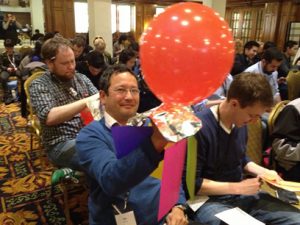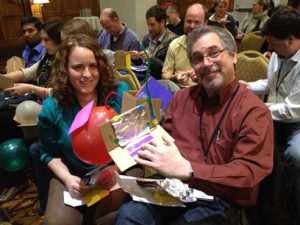Four Tips to Navigate Working from Home
by Anne Loehr, Executive Coach, anne@mariposaleadership.com
I talk for a living, whether it’s through keynotes, employee training, executive coaching, human capital consulting, writing articles, or just a chat with a client. I’m lucky enough to have clients from a variety of industries and sectors, giving me a wide view of how organizations are handling similar situations. This week alone I had the honor of chatting with people from large consulting firms, start-ups, the Federal government, tech firms, mid-size companies, biopharma organizations, large school systems, manufacturing firms, real estate industry leaders, and HR professionals. I learned a lot of best practices for navigating the Covid-19 work from home (WFH) situation and I’d like to share those with you here.
Schedule daily white space
Someone said to me, “It’s just telework. It’s not a big deal.” Wrong. It’s not just telework and it is a big deal. Why? Because the old paradigm of telework was that you worked from home 1-2 days/week, usually while others in your home were at work and/or school. Now everyone is working and learning under one roof, which adds complexity to the situation. I have it fairly easy; our high school daughter can self-manage her day. However, I have one client who has 3 children under the age of 5 at home while both he and his wife are trying to work. Ouch! That’s a tough situation!
So what are organizations doing to manage this? One best practice is to create intentional white space and schedule set times for team calls. One firm only holds calls from 8:30 am-noon and then 2-5 pm, local time. This allows people to have a midday break to attend to their own personal needs or the needs of those who live with them.
Learn together
It’s easy to disengage on employee development right now. I’ve heard “Training and development is a non-essential, so we’re cutting the live employee training we had planned”. I get it; financial stability and cash flow is vital right now. However, don’t forget about your teams who want to feel a sense of normalcy. So instead of offering a live employee development training, conduct a 60-minute virtual ‘lunch and learn’ on living through change or a 45-minute webinar about stress management instead. It’s easy to do and shows the teams that you are still there for them.
Lempathy
It’s easy to lose focus when WFH, so set a clear focus on short-term goals and how the goals align with the organizational mission. Create a 2-minute podcast or video to remind your team what you’re working on and use shared docs to create accountability.
It’s also easy to tilt toward excessive empathy, such as “It’s OK that Biva didn’t achieve his tasks today. He has 4 kids at home.” Giving a pass every once in a while shows flexibility; excessive empathy breeds missed deadlines. So use ‘both/and’ instead; in other words, try “Wow! Having four kids at home while working is hard. How can you achieve the biggest deadline today and have the kids home? What’s the first step? Second step?” Bottom line: show you care AND that goals still need to be completed. One of my coaching clients calls this “lempathy”: leading with empathy. It works for him; see if it works for you.
Focus on self-care
Stress manifests in different ways, for different reasons. In general, there are three pillars of health: physical, mental, and emotional. Take a self-assessment and ask yourself how you’re doing on:
Physical: Maintaining the nutrition, sleep and exercise that your body needs
Mental: Focusing on the task at hand
Emotional: Self-regulating your emotions appropriately with those around you
Whatever you do to manage your WFH situation, remember to keep it fun! People want to feel connected; they are looking for the water cooler experience, where they can just have a fun chat for a few minutes with each other. So set this up with virtual coffee chats, happy hours, walks, exercise classes, and even hobby times (knitting anyone?). One company in Boston creates daily entertainment videos for the employee’s children to watch while the parent is working. Another organization spreads smiles via Skype. What will work for you?
I’d love to hear how you are navigating your work from home in these stressful times. What is working for you and what is not? Let’s share experiences. Send me an email or contact us on Twitter.
MORE

